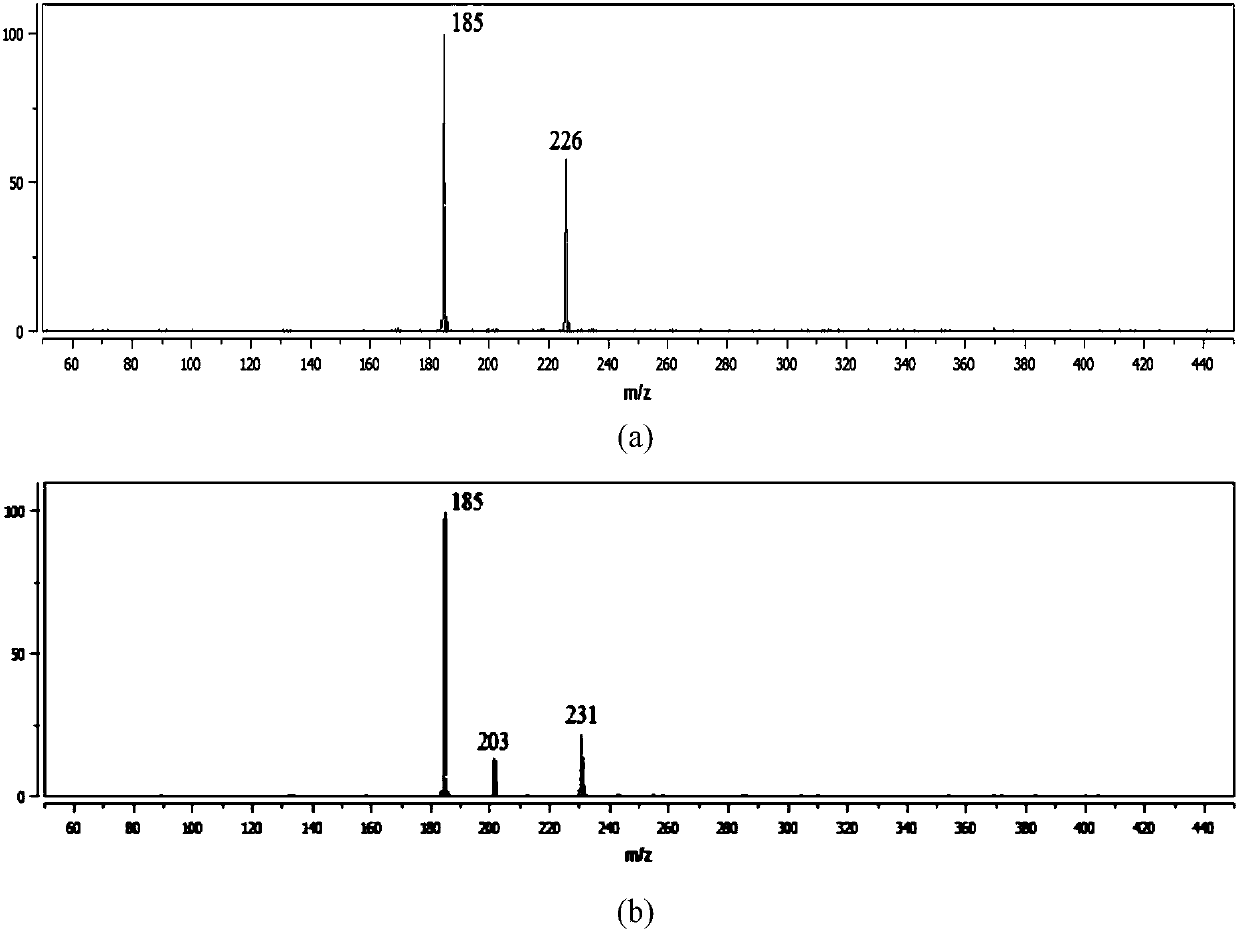Phosphorus carpentine positive ion and gas-phase preparation and application thereof
A cation and gas-phase technology, applied in chemical instruments and methods, instruments, analytical materials, etc., can solve the problems of limited generation and separation methods of phosphocarbene cations, few studies on properties and activities, and achieve rapid qualitative and quantitative detection with simple methods Ease of operation, simple method and effect
- Summary
- Abstract
- Description
- Claims
- Application Information
AI Technical Summary
Problems solved by technology
Method used
Image
Examples
Embodiment 1
[0030] Embodiment 1 (gas-phase preparation method of diphenylphosphocarbene cation)
[0031] Adopt the mass spectrometry device of the gas-phase molecular-ion reaction disclosed in the Chinese patent application number 201510254326.1, the principle of the gas-phase preparation method of the diphenylphosphocarbene cation in Example 1 is as follows figure 1 shown;
[0032] (1) 1 mg of triphenylmethylphosphonium bromide was dissolved in 1ml of methanol, and the mass spectrum signal m / z 277 of triphenylmethylphosphorus cation could be detected in ESI-MS positive ion mode;
[0033] (2) The mass spectrum peak of m / z 277 was fragmented by collision-induced dissociation (CID) to obtain a fragment peak of m / z 185, which was diphenylphosphocarbene cation.
Embodiment 1 2
[0034] The gas phase preparation mass spectrogram of embodiment 1 diphenylphosphocarbene cation is as follows figure 2 As shown, the diphenylphosphocarbene cation obtained in the gas phase was characterized by high-resolution mass spectrometry, and the results are as follows: accurate molecular weight determination calculated for C 12 h 10 P + :185.0515,found:185.0507,relative error:-4.32ppm.
Embodiment 2
[0035] Embodiment 2 (the gas phase molecule-ion reaction of diphenylphosphocarbene cation)
[0036] After selective isolation of the diphenylphosphocarbene cation obtained in the MS / MS, the molecular reagents were introduced into the ion trap, and (a) acetonitrile, (b) formic acid, (c) acrylonitrile, (d) dichloromethane were selected. , (e) ethyl acetate, (f) n-butanol, (g) tert-butanol, (h) triethylamine, (i) benzene and (j) styrene total 10 kinds of reagents with diphenylphosphocarbene The cation reacts, and the partial pressure of the reaction gas is controlled at (0.4-0.6)x10-5 Torr, the control time is between 500ms and 1s, and clear response results can be obtained such as image 3 shown. These 10 kinds of molecular reagents can react with diphenylphosphocarbene cation to generate addition products, and the characteristic peaks of addition product ions are observed in the mass spectrum of the reaction results, realizing the qualitative detection of these 10 kinds of sma...
PUM
 Login to View More
Login to View More Abstract
Description
Claims
Application Information
 Login to View More
Login to View More - R&D
- Intellectual Property
- Life Sciences
- Materials
- Tech Scout
- Unparalleled Data Quality
- Higher Quality Content
- 60% Fewer Hallucinations
Browse by: Latest US Patents, China's latest patents, Technical Efficacy Thesaurus, Application Domain, Technology Topic, Popular Technical Reports.
© 2025 PatSnap. All rights reserved.Legal|Privacy policy|Modern Slavery Act Transparency Statement|Sitemap|About US| Contact US: help@patsnap.com



